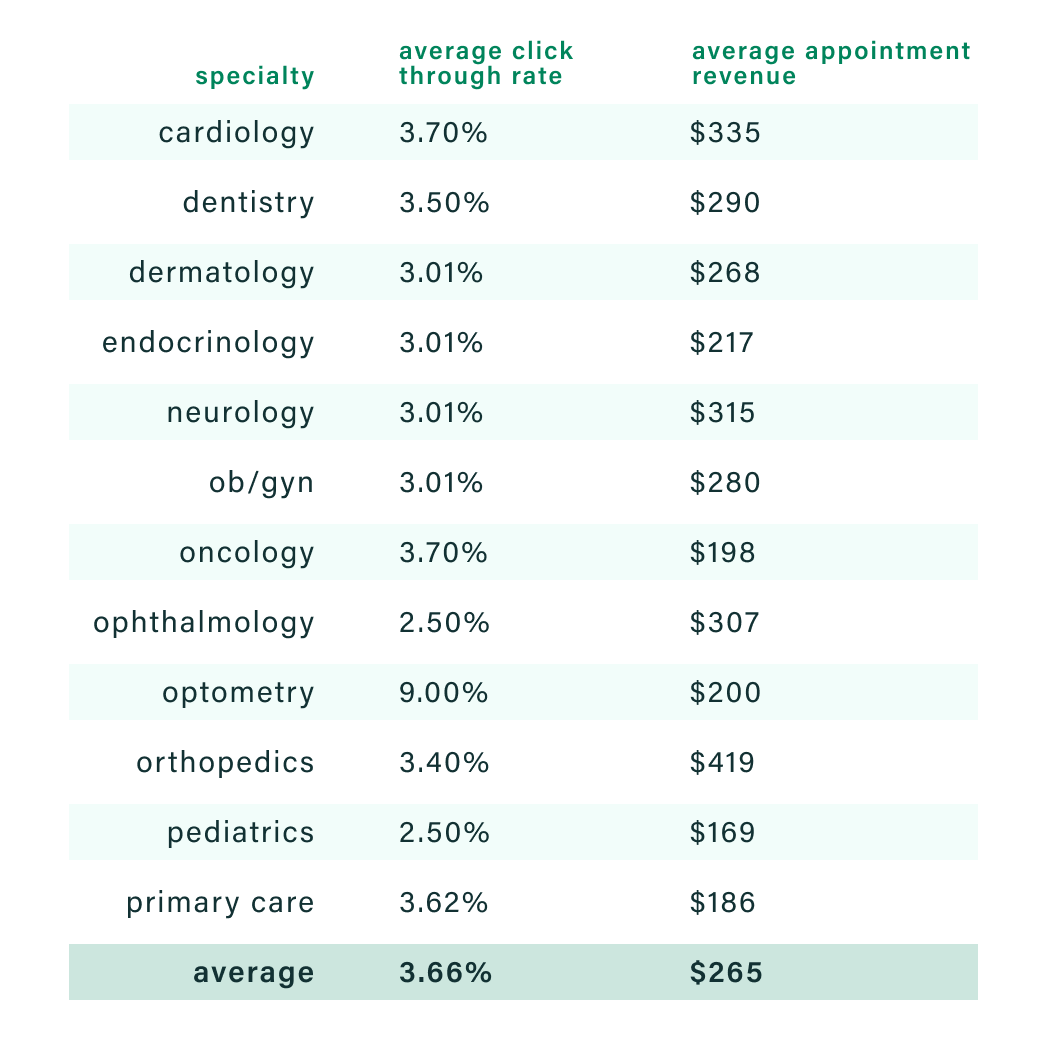measure healthcare marketing impact in 5 minutes or less

cured’s revenue calculator gives healthcare marketers a quick and easy way to demonstrate the impact of their digital campaigns
Marketing has long been underutilized in healthcare, but that trend is changing drastically. Healthcare consumers want relationships with providers inside and outside the care setting. To meet changing consumer needs, organizations must invest in digital marketing to prioritize patient outreach and build those relationships. Digital marketing allows marketers to measure the impact of their campaigns. They can measure campaign engagement, positive changes in patient behavior that the campaign is driving (e.g., scheduling a needed appointment), and the revenue impact of each appointment scheduled.

Accurately measuring revenue impact can be very challenging for marketers. According to The CMO Survey1, only 58.7% of marketers across all industries can link digital marketing to business revenue. Measuring Return on Investment (ROI) is widely considered even more difficult. The inability to effectively measure the revenue impact of healthcare marketing initiatives can lead to suboptimal patient outreach strategies, reduced business value, and an inaccurate perception of healthcare marketing departments as cost centers rather than as value drivers. So, how can healthcare marketers bridge this gap?
In this article, we will share:
- What ROI means in the context of healthcare marketing
- How healthcare marketers should approach ROI
- How to quickly measure impact
What ROI means in the context of healthcare marketing
ROI is often considered to be the gold standard key performance indicator (KPI) for measuring success. ROI tells an organization if the value of their investment outweighs the cost. When applied to marketing, this calculation indicates if marketing efforts contribute to revenue and is used to justify marketing spending and budget allocation for ongoing and future campaigns and initiatives.
The idea boils down to - is the marketing team adding value to the organization through revenue generated by marketing efforts, and is that value higher than the cost to run the marketing campaigns? In other words, is the marketing department a value center or a cost center?

In the context of digital marketing campaigns, healthcare organizations can translate this to: did the campaign create enough revenue from the patient appointments that the campaign was driving to supersede the cost of running the campaign?
How healthcare marketers should approach ROI
Although the formula to calculate ROI seems simple, in practice, it is complicated to measure. The equation only works when there is clear and codified data; including the marketing conversion funnel, the organization’s revenue model, and the costs of running a campaign. The challenges around each of these factors can be intimidating, and working through these can be time consuming.
We recommend an alternative but equally viable approach to measuring impact - one that any healthcare marketer can quickly achieve. Instead of chasing ROI, a compelling way to articulate the impact of marketing initiatives is to focus on campaign engagement, revenue impact, and patient impact.
Fortunately, most digital marketing technologies used today can natively show campaign engagement metrics (open rates, click rates, etc.). These metrics allow marketers to quickly understand the reach of digital marketing campaigns, which is a significant advantage over legacy marketing strategies (direct mail, billboards, radio advertisements, etc.). This also shows where drop-off occurs in the conversion funnel and enables campaign improvements to enhance reach (e.g., change the subject line to drive more opens, change the CTA copy to drive more clicks). However, top-of-funnel metrics such as reach, opens, and clicks can be challenging to translate into a dollar value or patient impact.
To show the positive impact on patient outcomes, healthcare marketers should track the number of appointments driven by the campaign. Assuming audiences are segmented appropriately, marketing campaigns provide patients with relevant information needed to understand care options better and enable them to take the next step (e.g., scheduling a preventive care screening). Lack of awareness about recommended preventive services is one of the primary barriers to population health and positive patient outcomes2. Driving patients to visit their clinicians positively influences patient behavior, ultimately helping patients to build a more informed and proactive relationship with their health.
Demonstrating revenue impact can be as simple as understanding the average revenue created by a single appointment and then multiplying it by the total number of appointments that the digital marketing campaign drove.
The nature of the marketing funnel, and drops in conversion at each stage, can make it difficult to know how many appointments and how much revenue can be attributed to a campaign. That’s where we can help.

How to quickly measure impact
We know healthcare marketing. We understand the complexities around the marketing conversion funnel and healthcare data. To help marketers measure impact, we developed an easy-to-use revenue calculator. The calculator generates campaign results using industry averages for appointment value, no-show rates, and conversion rates.
Marketers enter a few unique data points:
- specialty of the appointment
- estimated audience size
- estimated click-through rate
- estimated revenue per appointment
We ingest the data, pair it with industry standards, mimic a realistic conversion funnel, and provide the predicted revenue and appointment volume that a campaign can create!
Organizations that don’t know their estimated click-through rate or estimated appointment revenue can leverage the industry standards per specialty, listed below. Use these specialty-specific averages to see the impact on the patient population and revenue generation. Modify the calculator’s form entries to see the impact of changes to each data point, like increasing click-through rate by a certain percentage or sending to a higher volume of recipients (keeping in mind that the audiences of campaigns should be intentional and segmented based on consumer need and relevance).

Our revenue calculator shows the total campaign value (revenue impact) and the total appointments driven (patient impact) of marketing efforts and illustrates marketing’s role in patient growth and experience initiatives. Share these numbers with the marketing team and executives regularly to demonstrate the power of executing proactive marketing outreach to the right people, with the right message, at the right time.
As expectations of healthcare marketing increase due to consumer expectations and industry demand, proving the impact and value of marketing campaigns is increasingly important. Measuring ROI is complex - for a quick win, use Cured’s revenue calculator to produce meaningful metrics to share with executives and inform marketing strategy. Tracking campaign impact will help marketing teams prove value, improve the effectiveness of campaigns, support organizational growth objectives, and ultimately help patients understand and prioritize their healthcare needs.
Calculate your impact! Use Cured's Revenue Calculator.
Sources:
- Citation | The CMO Survey - The Highlights and Insights Report February 2022 Managing Digital Marketing Returns, Privacy, and Climate Impact
- Citation | U.S Department of Health and Human Services - Office of Disease Prevention and Health Promotion - Preventative Care



